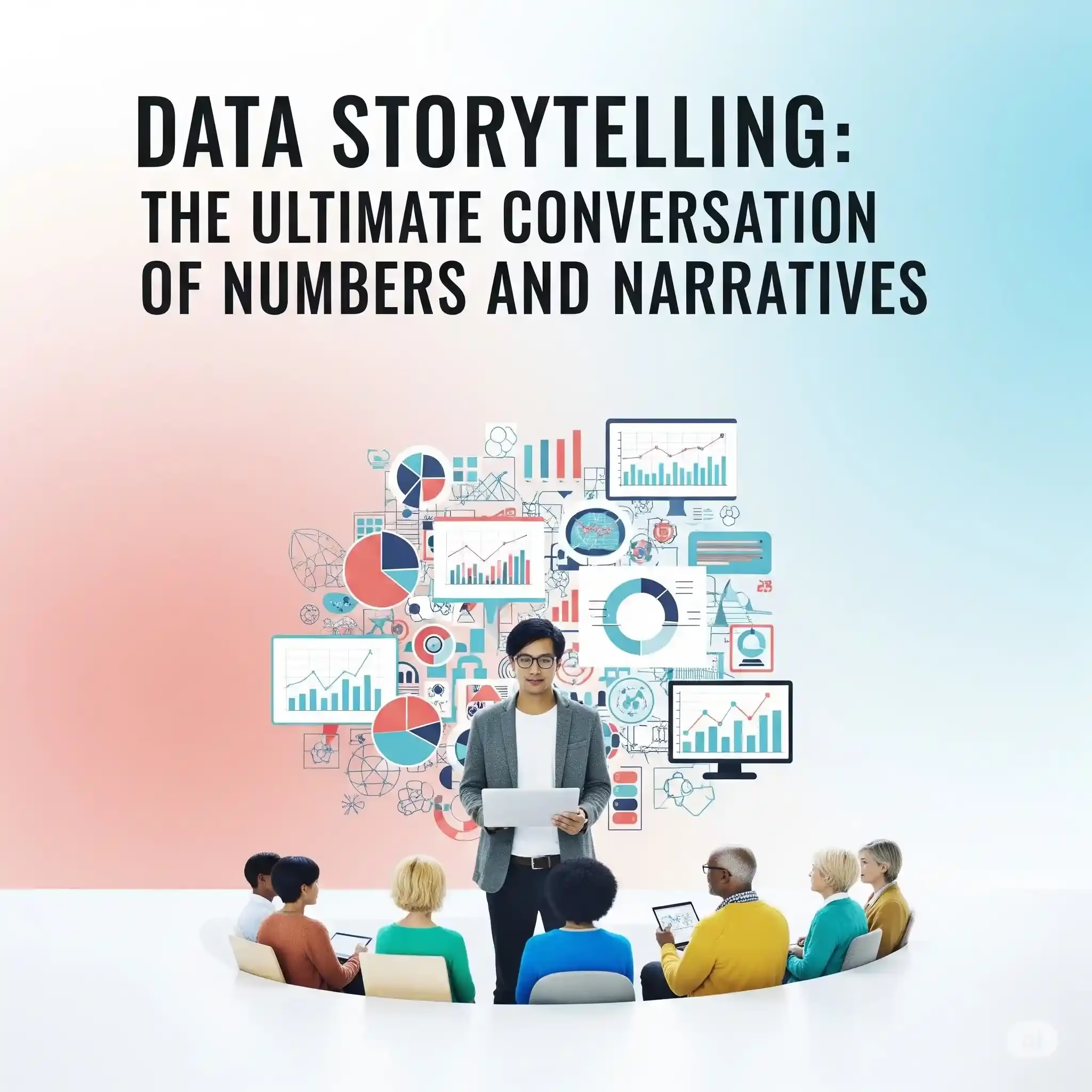Data Storytelling: The Ultimate Conversation of Numbers and Narratives
In a data-driven world, plain numbers aren’t good enough any more. The true power comes from transforming these numbers into stories that touch, inspire and motive action. At its core, this is data storytelling: the intersection of analytical insight and engaging communication.
What Is Data Storytelling?
So what is data storytelling?It’s the art of using a narrative to communicate data in a way that helps people understand why it matters as well as what it says. It involves three main components:
Data
Facts and figures that underpin the argument.
Graphics
Patented charts, infographics, and graphs, all proven in the field
Storytelling
A sensible story as an explanation of patterns, signaling of insights, and a call to action.
These components work together to deliver an integrated experience that makes data insightful.
Why Storytelling Matters in Data
Spreadsheets and dashboards can render performance metrics, but they usually don’t motivate change. Humans are storytelling creatures — we remember stories much better than we remember a string of stats. Data storytelling – connects logic and emotion; so it’s easier to:
In other words, good data storytelling doesn’t just inform—it’s an active call to action.
Anatomy of a Great Data Story
A good data narrative often takes the form of what we’d recognize as a classic storytelling arc:
The Hook
So begin with a question, a challenge, or a surprising fact—something that would have readers wondering if they knew the truth. But that’s just a teaser, and it gets the ball rolling.
The Conflict
Bookend with a business problem or opportunity inherent in the data. What’s going wrong—or right?
The Evidence
Current data points, graphs, and comparisons. Here’s where the analytics bolster the story.
The Resolution
Demonstrate how the data supports an inference or decision. Provide recommendations or forecasts.
The Call to Action
What could your readers best do with this information? Specific, Actionable Steps for Making Your Story Come to Life.
Best Practices for Data Storytelling
Know Your Audience
Customize your message to decision-makers, techies, or the public depending on how much they know about the data.
Focus on Clarity, Not Complexity
Don’t overload your audience with many stats. Pick the best data that illustrates your main point.
Use Visuals Strategically
Don’t decorate—communicate. Each chart and graph should tell a story.
Build Empathy with Context
Numbers mean something when they are attached to the real world. Tell them the “why” beyond the data.
Edit Ruthlessly
Less is more. Trim out unnecessary information and keep the story tight, relevant, and engaging.
Tools for Effective Data Storytelling
Here are a few handy tools to support the creation of convincing data stories:
Tableau + Power BI
Great for interactive dashboards and visuals
Canva or Figma
For infographic design
Narrative Science
For Natural Language Generation, Yes.
Google Data Studio
Used for Collaborative Live Reporting Stories
Real-World Examples
Data storytelling helps Netflix predict what users want to watch and when.
Spotify Wrapped transforms listening data into a fun, shareable end-of-year overview.
Public health resources (i.e., COVID-19 trackers) collate real-time data with messaging that directly drive behavior change.
Final Thoughts
Data storytelling is no longer a “nice-to-have” – it is an essential capability in the era of information abundance. Whether you’re a data analyst, marketer, or an executive, the way you communicate insights can shape what people do next, and impact whether they take action at all.
If you are professional and you want to improve your data storyteller skills then you should take the first step in the direction to join a data analyst training in Hyderabad. And many of these programs blend the technical analyst’s tool kit with the communication skills and visualization know-how required to turn numbers into stories that actually prompt real business decisions.
Turn your numbers into narratives. Give a voice to your data — by storytelling.
